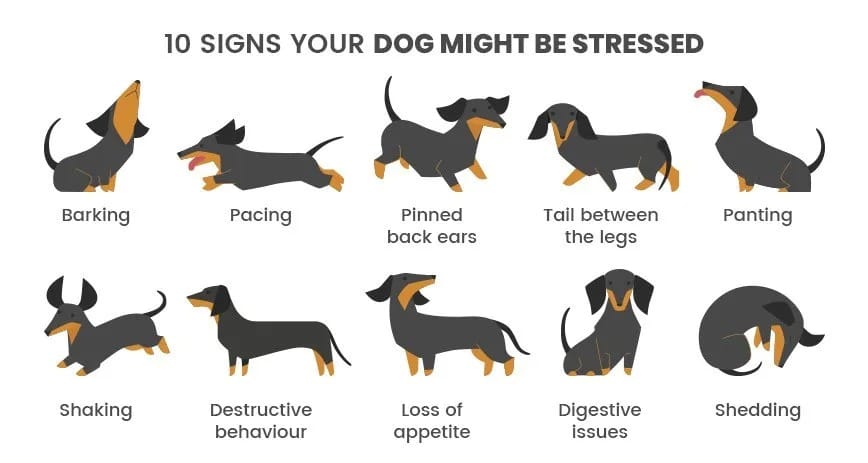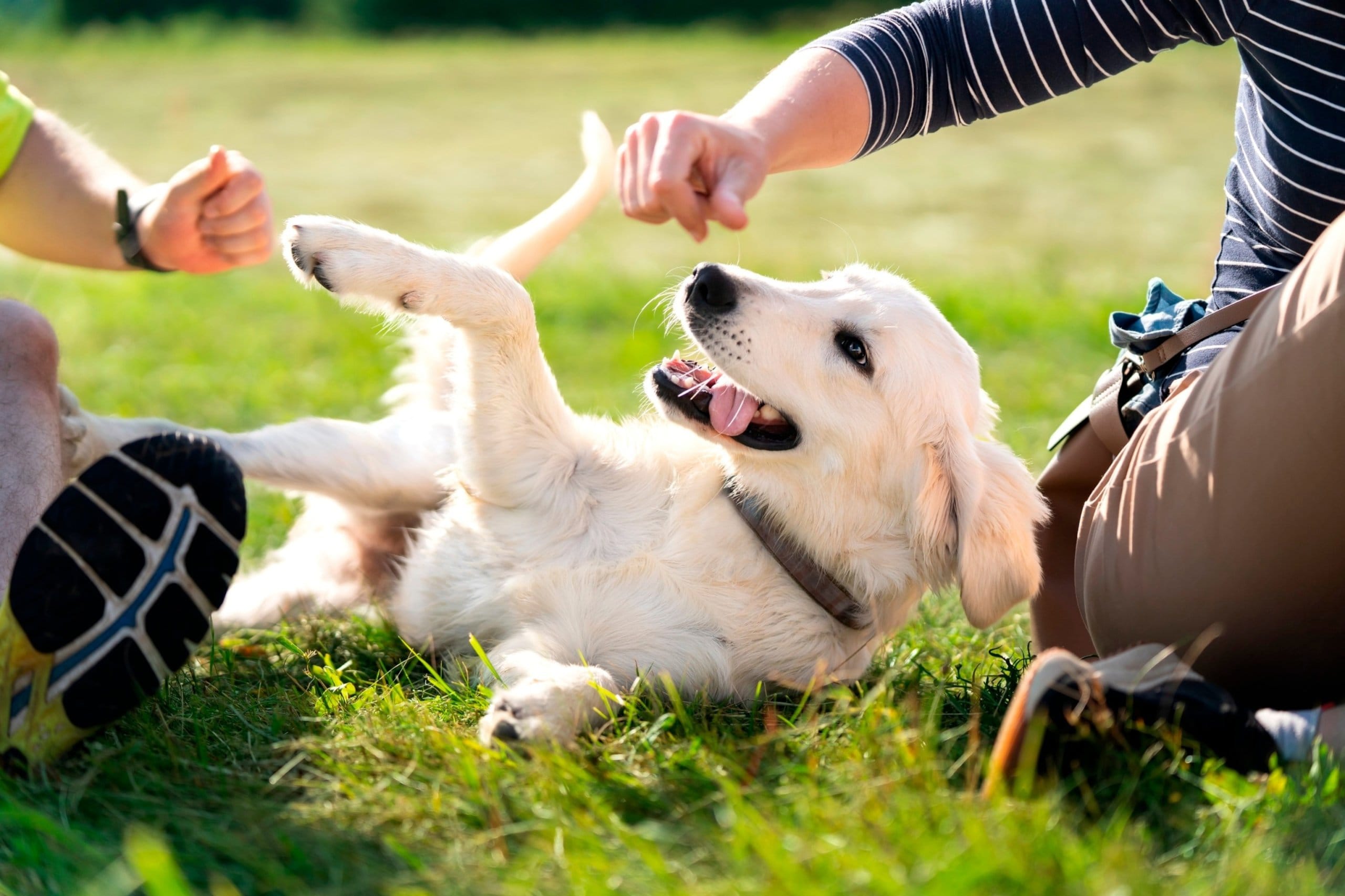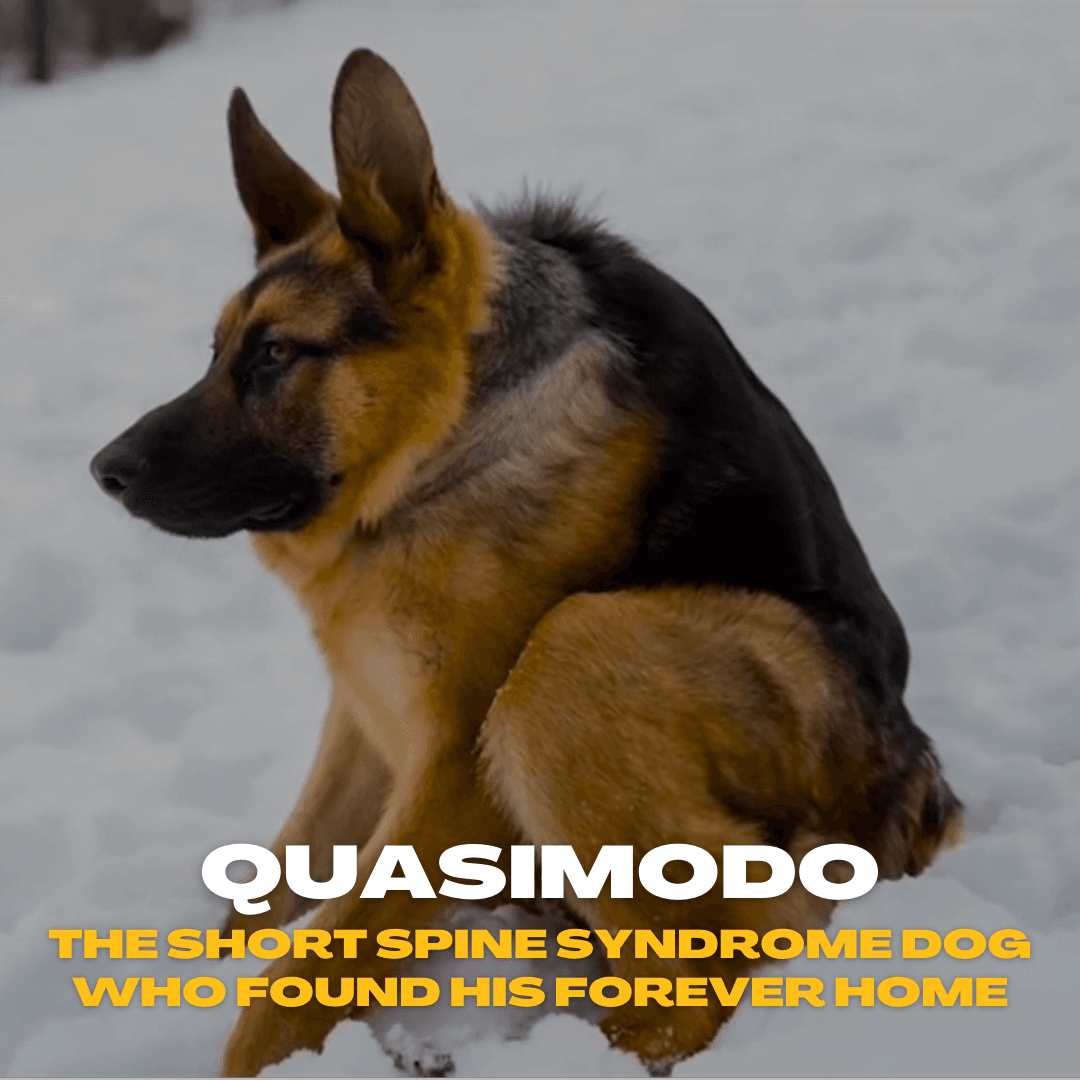Just like humans, dogs can feel stress. This could significantly affect their general well-being. Dog stress can manifest in various ways, from behavioral changes to physical symptoms, leaving pet owners concerned about how to help their furry friends. Thankfully, there are numerous methods for dog stress prevention and improving your dog’s mental health. In this article, we’ll explore the causes of stress in dogs and offer practical tips to ensure your pet stays happy and stress-free.

Understanding Dog Stress: What Causes It?
Stress in dogs can arise from many factors. Changes in their environment, lack of exercise, separation anxiety, loud noises, or even boredom can contribute to a stressed-out pup. Recognizing the signs of dog stress is key to addressing it early.
Common signs of stress in dogs include:
- Excessive barking or whining
- Pacing or restlessness
- Panting or trembling without reason
- Aggression or withdrawal
- Destructive behavior (chewing furniture, digging)
- Loss of appetite or digestive issues
If you notice any of these signs in your dog, it’s essential to identify the triggers and work on dog stress prevention strategies.

Why Dog Mental Health Matters
A dog’s mental health is just as important as its physical health. When dogs are stressed, it affects their quality of life, leading to further health problems if left untreated. Keeping your dog mentally stimulated, emotionally supported, and free from stress is crucial for their long-term happiness and health. Poor dog mental health can result in behavioral issues, weakened immune systems, and even shortened lifespans.
By understanding how to maintain your dog’s mental well-being, you can improve their overall happiness.

Dog Stress Prevention: Practical Tips
Now that we know the importance of dog stress prevention, let’s explore practical ways to help your dog feel calm, secure, and content in their daily life. These tips are simple, yet effective, in promoting stress relief for dogs.
Create a Safe Space
Dogs need a designated area in the home where they feel safe and secure. This could be a cozy corner with their bed, toys, and favorite blanket. When your dog feels overwhelmed, they should have a space to retreat to. Creating this safe environment helps in dog stress prevention by giving them a refuge from stressful situations.

Establish a Routine
Dogs thrive on routine. Consistency in feeding times, walks, and playtime can help reduce anxiety in your pet. When your dog knows what to expect each day, they feel more secure and less stressed. Regular routines are one of the best long-term solutions for dog mental health.

Exercise and Play
Physical activity is an essential part of stress relief for dogs. A dog that doesn’t get enough exercise can become restless, anxious, and destructive. Make sure your dog gets daily walks, playtime, and opportunities to run off-leash if possible. Engaging in games like fetch or tug-of-war not only tires them out but also improves their mood and relieves stress.

Mental Stimulation
Keeping your dog’s brain active is crucial to dog stress prevention. Puzzle toys, training sessions, and interactive games challenge your dog mentally, which can help reduce boredom and anxiety. Consider rotating toys or teaching your dog new tricks to keep their mind sharp.

Regular Socialization
Loneliness and lack of social interaction are significant contributors to dog stress. Make sure your dog has plenty of opportunities to interact with other dogs and people, whether through regular walks, dog parks, or playdates. Socialization helps prevent anxiety and improves overall dog mental health.

Calming Tools and Supplements
If your dog is prone to anxiety, calming tools such as anxiety wraps, pheromone diffusers, or stress relief supplements can help. Talk to your vet about the best options for your dog’s needs. These tools can provide much-needed stress relief for dogs, especially during events like thunderstorms or fireworks.

Minimize Exposure to Stressful Triggers
If you know certain situations trigger your dog’s stress, try to minimize their exposure to those triggers. For example, if loud noises like fireworks make your dog anxious, create a safe, quiet space for them during these events, or use calming tools to ease their anxiety. Understanding and avoiding these triggers is an essential part of dog stress prevention.

Stress Relief for Dogs: When to Seek Professional Help
Sometimes, despite your best efforts, a dog may continue to experience stress and anxiety. If your dog’s stress persists or worsens, it’s essential to seek help from a professional. A vet or animal behaviorist can help identify underlying health issues or recommend specific treatments to manage your dog’s stress. Chronic stress can affect dog mental health and lead to more severe problems if not addressed.

Conclusion
Preventing and managing dog stress is key to maintaining a happy and healthy pet. You can significantly improve your dog’s well-being by creating a calm, structured environment, providing regular exercise and mental stimulation, and minimizing exposure to stressful situations. Remember that dog stress prevention isn’t a one-time fix – it’s a commitment to your dog’s long-term happiness.
By focusing on dog mental health and actively working on stress relief for dogs, you’re ensuring that your furry friend lives a joyful, stress-free life. After all, a happy dog means a happy owner.
If you found these tips helpful, don’t forget to share them with fellow dog owners to help keep their pets stress-free!







